Elevating Beverly Hills Homes Through Biophilic Design
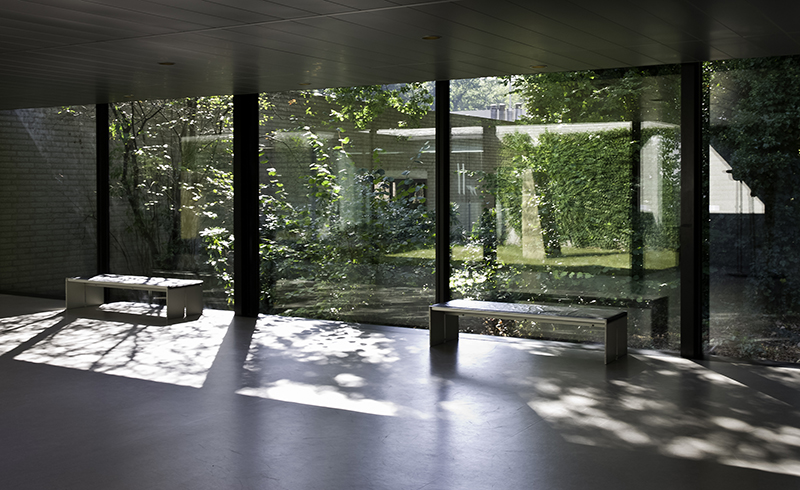
Seamlessly blend luxury and nature in Beverly Hills real estate.
Table of Contents:
- A new luxury standard rooted in nature
- THE PHILOSOPHY BEHIND BIOPHILIC DESIGN
- SEAMLESS INDOOR-OUTDOOR LIVING: A SOUTHERN CALIFORNIA SIGNATURE
- 2025’S TOP BIOPHILIC FEATURES AND TRENDS
- BIOPHILIC ARCHITECTURE AT THE HIGHEST LEVEL: GLOBAL AND LOCAL EXAMPLES
- WHY BIOPHILIC DESIGN ADDS LONG-TERM VALUE
- COMMUNE WITH NATURE IN YOUR OWN HOME
A new luxury standard rooted in nature
A quiet but powerful shift has been happening in Beverly Hills luxury real estate: biophilic design and architecture, which springs from the philosophy that the natural world should be integrated into the built environment. Think lush indoor gardens, sunlit spaces, organic textures, and a seamless connection between inside and out.
With its Mediterranean climate, sculpted hillsides, and proximity to both mountains and ocean, Beverly Hills offers the perfect canvas for designing homes that embrace nature in both form and function. Increasingly, architects, developers, and discerning buyers are gravitating toward spaces that don’t just look beautiful but feel grounded, nourishing, and restorative. Through biophilic design and architecture, many homes here are starting to set a new standard for luxury, one rooted not in excess, but in intention.
THE PHILOSOPHY BEHIND BIOPHILIC DESIGN
The term “biophilia” was first coined by psychoanalyst Eric Fromm and popularized by biologist E.O. Wilson, who believed humans have an innate tendency to seek connection with nature. Biophilic design brings this philosophy into our everyday spaces, intentionally incorporating natural elements into the way we build and live.
This approach goes beyond architecture and aesthetics. It’s about wellness. Here are some of the most impactful advantages:
-
Reduced stress levels. Exposure to natural elements like greenery, water, and daylight has been proven to lower cortisol levels, the hormone linked to stress. Simply being near nature-inspired features can activate the parasympathetic nervous system, helping homeowners feel calmer and more centered.
-
Improved air quality. Incorporating plants, green walls, and natural ventilation into home design helps filter pollutants, increase oxygen levels, and balance indoor humidity. This creates a healthier breathing environment.
-
Enhanced cognitive function. Studies show that natural light and outdoor views can improve focus, memory retention, and overall mental performance. In larger homes where residents may work, study, or create, these features support sustained productivity and clarity.
-
Better sleep quality. Biophilic spaces that align with natural circadian rhythms through thoughtful lighting and temperature control can help regulate sleep cycles. Exposure to natural light during the day and dimmer, warm-toned lighting in the evening supports deeper, more restful sleep.
-
Increased physical activity. Homes that feature inviting outdoor spaces, like wellness gardens, open patios, or walking paths, encourage movement. Residents are more likely to stretch, stroll, garden, or practice yoga when their environment naturally supports it.
-
Greater connection and mindfulness. Biophilic environments foster a sense of groundedness and presence. They promote slower, more intentional living, qualities that are increasingly valued by those seeking more than just comfort, but balance and meaning as well.
In today’s luxury market, all this matters. More and more buyers are seeking sanctuaries, not showrooms. They want homes that align with a holistic vision of success, one that prioritizes well-being, sustainability, and a deeper sense of presence. In a world that moves fast, biophilic design offers a much-needed respite.
SEAMLESS INDOOR-OUTDOOR LIVING: A SOUTHERN CALIFORNIA SIGNATURE
There’s perhaps no better place on earth to experience the full impact of biophilic design and architecture than Southern California.
The climate here makes it easy to embrace biophilic principles. Year-round sunshine, cooling ocean breezes, and minimal rain allow for consistent use of outdoor spaces, edible gardens, and tranquil water features. In many ways, the natural world is the main event.
In Beverly Hills and surrounding areas, we’re seeing an increasing number of homes with disappearing walls, central courtyards, breezeways, and outdoor living rooms. Materials like travertine, cedar, and glass help thread the interior to the exterior, while open-plan layouts and floor-to-ceiling windows invite natural light and landscape views into every corner of the home.
Take, for example, the iconic Trousdale Estates. Many properties here feature panoramic sliding glass doors that open onto lush terraces with infinity pools and fragrant gardens. Or consider new developments in Brentwood, where homes are being custom-built around mature trees and the natural topography.
Browse more luxury homes in Beverly Hills and Southern California.
2025’S TOP BIOPHILIC FEATURES AND TRENDS
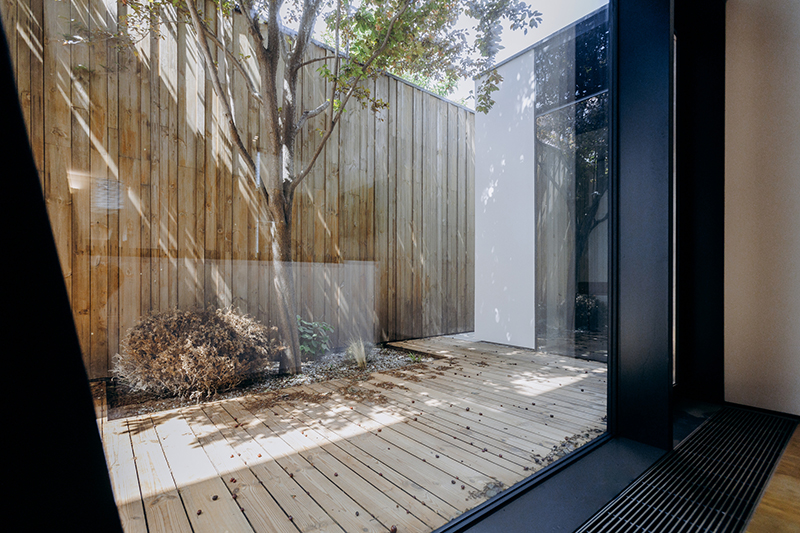
Blur the line between inside and out with expansive glass walls, natural textures, and a sun-dappled deck.
This year, we’re seeing a deeper integration of nature into every layer of the home, from structural elements to sensory experiences. These are the trends defining the future of biophilic design and architecture, especially here in Beverly Hills.
Living green walls & vertical gardens
Green walls are living art that has the added benefit of improving air quality and acoustics. These vertical ecosystems can be installed indoors (like in an entryway, hallway, or spa-like bathroom) or outdoors on a courtyard wall or terrace. In Beverly Hills, some homeowners are working with horticultural designers to incorporate fragrant herbs like mint and jasmine for a multisensory experience, or to create privacy screens made entirely of cascading greenery.
Natural light mastery
Access to daylight is a fundamental component of biophilic design. In 2025, the focus has shifted from simply maximizing light to sculpting it using architectural elements that frame the sun’s movement and enhance mood throughout the day. Think retractable skylights, glass bridges, light wells, and clerestory windows strategically placed for seasonal sun paths.
Many new builds in Trousdale or the Beverly Hills Flats now feature entire wings of the home oriented for optimal morning light in the kitchen and soft sunset views from primary bedrooms, intentionally designed to align with the body’s circadian rhythms.
Organic materials & textures
Biophilic design celebrates tactile authenticity. In 2025, we’re seeing increased use of limewash walls, exposed wood beams, woven cane panels, raw stone countertops, and textured clay tiles. These elements bring warmth and visual softness to otherwise minimalist spaces, offering a feeling of groundedness and understated elegance.
Rather than polished marble or synthetic quartz, many luxury homes now favor honed travertine or hand-hewn oak, materials that wear beautifully over time. These surfaces tell a story, and that patina is part of the charm.
One recently remodeled Beverly Hills estate used reclaimed teak flooring sourced from a Balinese temple, combining spiritual heritage with sustainable luxury.
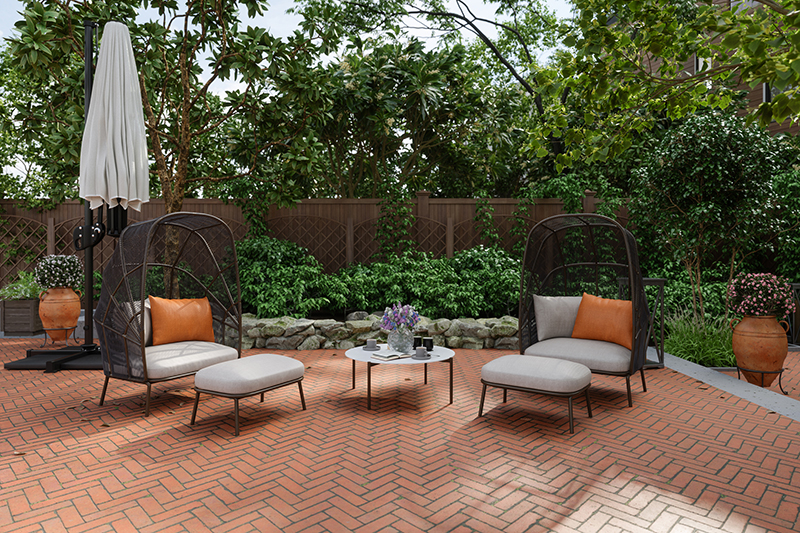
A lush wellness outdoor area that turns everyday moments into a nature-infused retreat.
Indoor water elements
Water adds movement, tranquility, and soothing soundscapes that support stress relief and sensory richness. In 2025, we’re seeing high-end homes integrate custom-designed water features in unexpected places, like meditative entry fountains, sunken koi ponds inside a central courtyard, or sleek water rills that border hallways with soft ambient sound.
Luxury spas within the home might include rainfall showers enclosed in natural stone, or Japanese-style soaking tubs positioned beside a window with views of a reflecting pool.
Nature-based color palettes
This year, interior designers are embracing earthy, sensory-rich palettes that evoke Southern California’s diverse natural landscapes. Warm desert neutrals, deep forest greens, soft sand tones, burnt sienna, and mineral blues are replacing stark monochrome interiors. These hues foster a sense of calm and connection.
In biophilic homes, color is a key mood-setting element. A living room painted in sage green, paired with handwoven textiles and wood furniture, becomes a nurturing retreat. Meanwhile, soft terracotta in a reading nook creates cozy grounding energy.
A home in nearby Upper Benedict Canyon, for example, recently incorporated a “California canyon” palette: muted ochres, clay pinks, and eucalyptus greens inspired by the natural hues of the surrounding hillside.
Wellness garden integration
Today’s gardens have transformed into deeply personal wellness spaces designed to support physical and emotional nourishment. Homeowners are commissioning edible gardens with heirloom vegetables, planting aromatherapy herbs like lavender and rosemary, and creating outdoor rooms for meditation or yoga practice.
We’re also seeing native landscaping take priority, which not only conserves water but helps restore local ecosystems. These gardens often include pollinator-friendly plants, fruit trees, and shaded nooks with seating or hammocks for rest and reflection.
There’s a Beverly Hills compound designed by a celebrity wellness guru that features terraced aromatherapy gardens with curated scents that shift as you move from one level to another: lavender at the entrance, citrus at the pool terrace, and chamomile near the outdoor spa.
BIOPHILIC ARCHITECTURE AT THE HIGHEST LEVEL: GLOBAL AND LOCAL EXAMPLES
The luxury design world is embracing biophilia on a grand scale, with some of the most elite names leading the charge.
Globally, brands like Aman Resorts have long integrated biophilic design and architecture into their properties, designing around trees, framing natural views, and using native materials to create immersive retreats. Closer to home, One Beverly Hills is making headlines with its commitment to green space and wellness-centered design, featuring a botanical garden with over 40,000 plants.
Architects like Olson Kundig and Howard Backen are setting new standards for homes that celebrate nature. Kundig’s work often includes pivoting glass walls, exposed steel, and raw wood, creating harmony between human-made and natural forms. Meanwhile, Backen’s wine country estates blend rustic elegance with organic sensibility, offering timeless inspiration for Beverly Hills homeowners who want a relaxed yet refined lifestyle.
As a real estate professional, I’ve had the privilege of touring and representing properties that exemplify these ideals. And more importantly, I’ve built relationships with architects, designers, and builders who understand how to create homes that don’t just shelter, but heal.
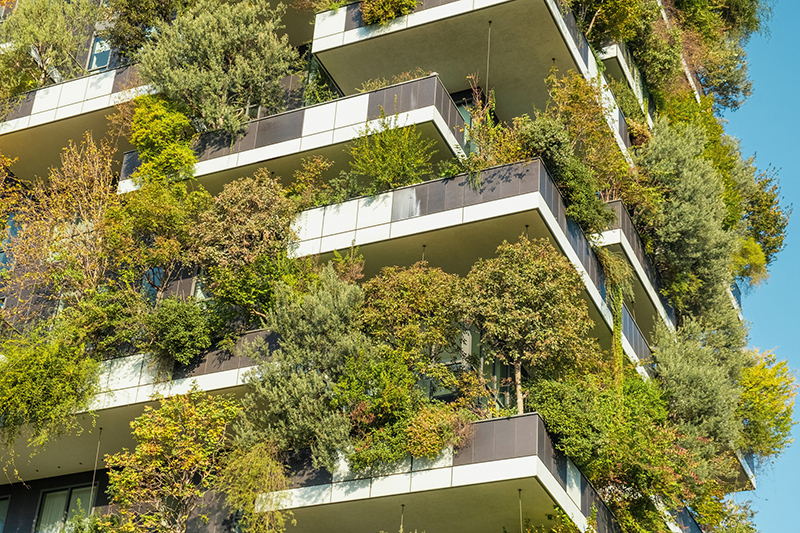
A striking example of biophilic architecture where lush greenery is woven into the very structure of the building.
WHY BIOPHILIC DESIGN ADDS LONG-TERM VALUE
The most coveted homes today are the ones that offer peace of mind, wellness, and connection, not just prestige and polished finishes. That’s why biophilic design and architecture is becoming a cornerstone of luxury living. Its benefits extend far beyond aesthetics, offering both personal wellness and investment returns.
Here’s how this nature-inspired approach adds long-term value for discerning homeowners and investors:
-
Enhanced lifestyle appeal. Integrated gardens, outdoor yoga decks, and organic materials make daily routines feel luxurious, enriching how homeowners experience their space.
-
Increased buyer demand. As more luxury buyers prioritize wellness, sustainability, and mindful living, biophilic homes appeal to a growing segment of the market.
-
Timeless design language. Unlike trend-based finishes, natural materials and earthy color palettes age gracefully, ensuring the home maintains its appeal for years to come.
-
Sustainability and eco-conscious living. Many biophilic features—like passive ventilation, native landscaping, and daylight harvesting—align with green building practices, reducing energy use and environmental impact.
-
Higher resale potential. Wellness-centered design is increasingly recognized as a premium feature, often commanding higher prices and reducing time on market when it’s time to sell.
I’ve seen firsthand how buyers light up when they walk into a home that smells like eucalyptus, glows with natural light, and opens to a blooming garden. There’s an intuitive sense of peace that no marble slab or smart home system can replicate.
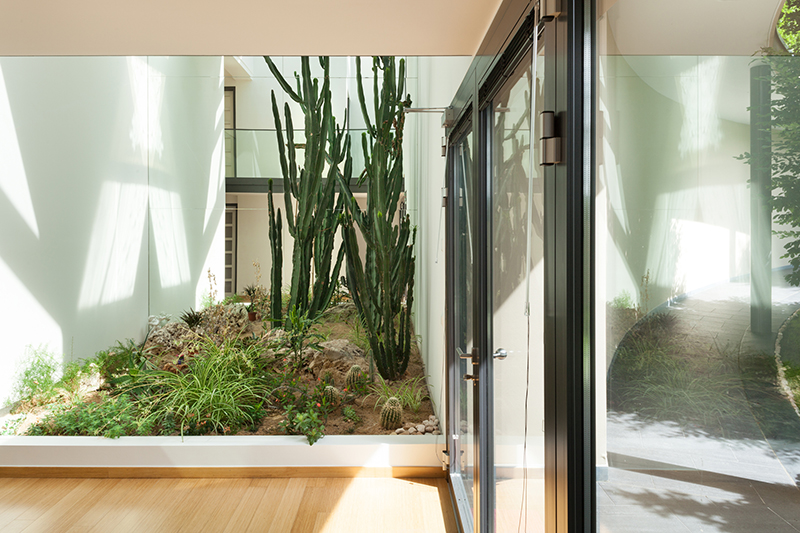
Natural materials and timeless design choices like wood and stone add lasting value to luxury Beverly Hills real estate.
COMMUNE WITH NATURE IN YOUR OWN HOME
We are living in a new era of luxury, one where beauty is inseparable from well-being, and design is a vehicle for deeper connection. In Beverly Hills, biophilic design and architecture has become a lifestyle choice, a wellness investment, and an artful way of honoring the natural world that surrounds us.
For me, this movement resonates on a personal level. I’ve come to believe that the most remarkable homes are those that restore us and make life better every single day.
If you’re curious about how to bring more nature into your living space or if you’re looking for a home that already embodies these principles I would be delighted to guide you. Let’s find a space where luxury meets life, and where design serves the soul.
Contact me, Joyce Rey, at 310.291.6646 or send a message to learn more about Beverly Hills luxury homes designed for wellness, sustainability, and timeless elegance.

Browse our latest news and updates below

![[ai_client_name]](https://joycerey.com/app/themes/joycereycom_2024/assets/images/site-logo-white.svg)
